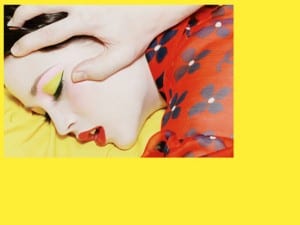Garrett Arreguin, also known by the moniker “Grafik”, is a Creative Director and designer originating from Orange County, California. He speaks to Aesthetica about his interest in dark and textural collage, and the process of working with recording artists on cover art.
A: Many of your works feature collages. What do you like about this approach?
GA: My latest design series, Off The Record, utilises this style. It started as an experimental design process, and ultimately inspired me to adapt my own style of “Collage” or “Décollage” art. It is similar to other collage artists as it pertains to the ripped aesthetic, but I work on album art created in collaboration with recording artists. I enjoy the process and appeal of collage design just as some photographers prefer film over digital. There’s a characteristic of “real-ness” to the work – knowing it required hands to make and not just a click of the button with preset adjustments. It’s different every time.
A: What inspires you?
GA: I’m inspired by the unknown that comes from dedicating myself to something – and the learning process within that journey. I’m inspired by other artists, my sons Anthony and Aiden, and the general idea of life and death. I’m inspired by the successes of others who have pursued their dream and made it work against all odds. It’s about the value of leaving something behind when you are gone.
A: How do your designs combine text and image?
GA: I’ve never cared to apply text to any designs – unless I felt like it complimented the concept, or was necessary for an infographic or advertisement. The majority of my work with type will typically have a brand identity or a concept behind it. I will either look for preset fonts to alter or create the font by hand according to the project.

A: What does the the process of creating an album cover look like? Where do you begin?
GA: The process varies depending on the style of art and overall direction. Each client is different – some people micromanage everything while others trust my vision. The process usually starts with research and making sure I understand what they want – and if it’s something I can execute. Mood boards and drafting are beginning stage essentials. I will either start with a pencil and sketchbook in hand or wait for Photoshop to turn on. Different styles call for different starting points.
A: You have created covers for a range of recording artists. What is it like collaborate on album art?
GA: I personally enjoy the collaborative process. I have learnt that a lot of recording artists don’t care about their visuals, or care enough to treat it as a collaboration. So, when I do get the opportunity to properly work with someone – to share ideas and have a strong understanding of what to expect – there are less revisions. Time is not wasted and ultimately, I end up with more of an appreciation for the project.
A: How does your personal work compare to your more commercial projects?
GA: I would say they have similar elements. My personal and commercial works are often dark with distressed textures – heavy on contrast.
A: How would you define your visual identity as a graphic artist?
GA: My work varies in different styles and techniques. In a way, it is experimental illustration and design. It’s tough to have a definitive identity when there’s still a lot to learn.
A: In what direction are you looking to take you work into the future?
GA: Stylistically, I’m a fan of German Expressionism, new realism Décollage, album art, and the skateboard graphics from the 1980s and 1990’s. I’d like to experiment with those interests, fuse them together and see what I come up with.
A: What projects do you have planned for 2020 and beyond?
GA: There are two projects on my calendar this year outside of my collaborative work. One will be the launch of my personal brand. The other is a company created by Interscope Records and Freebandz recording artist, FXXXXY, who I’ve partnered with as creative director.
Find out more and see the work here.
Images: Décollage Series, Off The Record, by Grafik.





